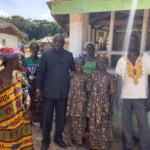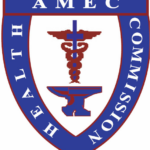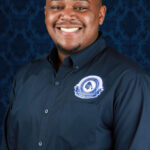By Reverend Dr. Kabrielle M. Baker, Contributing Writer
On August 25, 2024, during the General Conference of the African Methodist Episcopal Church, the late Bishop Anne Henning Byfield preached a message titled “Traumatized and Still Fighting to Win” from 2 Chronicles 25:8–9.
With boldness and clarity, she named what many have felt but few have said aloud–we are a people and a church in trauma. We carry wounds from betrayal, mishandling, and harm that have come from both secular systems and sacred spaces. She spoke of generational pain and the ways anger can keep the cycle of unforgiveness loud and lingering. Yet she also reminded us of God’s grace, a grace extended to both the abused and the abuser.
It was a deliberate diagnosis naming our aches and pain, both structurally and spiritually. After the sermon, she said words that have stayed with me: “I didn’t finish my assignment.” She came back to the microphone, calling for corporate repentance: “Lord, forgive us for everything the church has done against your will. Lord, restore us.”
That experience still lingers. Typically, after a diagnosis comes a prescription for full recovery. As Bishop Anne modeled returning to the podium to complete her assignment and call forth healing, I have to wonder if we, as a church, kept the phone off the hook to avoid answering that call? We cried out in repentance, but did we also allow ourselves to partner with God in our healing and wholeness?
To answer the call to renewal, we must embrace the expertise of those within and beyond the church as vessels of God’s healing work. It means breathing new vitality into our souls, our systems, and our structures. We must restore the way we operate and affirm the way we create opportunities for all to be seen and heard.
In my work with leaders and congregations, I have seen three core practices bring this renewal to life:
- Consultation: Audit and Align
Assess systems and structures by evaluating current ministries and motives to uncover opportunities for growth. - Curation: Sacred Space and Support
Provide spaces for leaders to rest, heal, and gain clarity by creating room to lament, learn, and lead differently. - Collaboration: Strengthen and Sustain
Partner with churches, community organizations, and institutions to build on strengths, address needs, and develop sustainable strategies for lasting impact.
In the spirit of Bishop Anne, Richard Allen, and yes–a little Martin Luther King Jr., I too have a dream: a church where leaders–clergy and lay–are healed; where investment into clergy and lay leader wellness is intentional; and where vitality breeds new vision.
Many of us learned about “Him” from a hymn. Hymns are the heart of hope, the theology of our testimonies. Today, we find ourselves balancing the blessing and the burden of being called, as a denomination, to be trailblazers in justice.
May we remember the charge to keep we have to serve the present age, a calling to fulfill as we create new melodies with the Hymn of Healing.
Reverend Dr. Kabrielle M. Baker is an Associate Minister at St. Paul AME Church in Grosse Pointe Park, Michigan.






Love your perspective! Let us not forget the charge. We pray the renewal as new melodies are written.